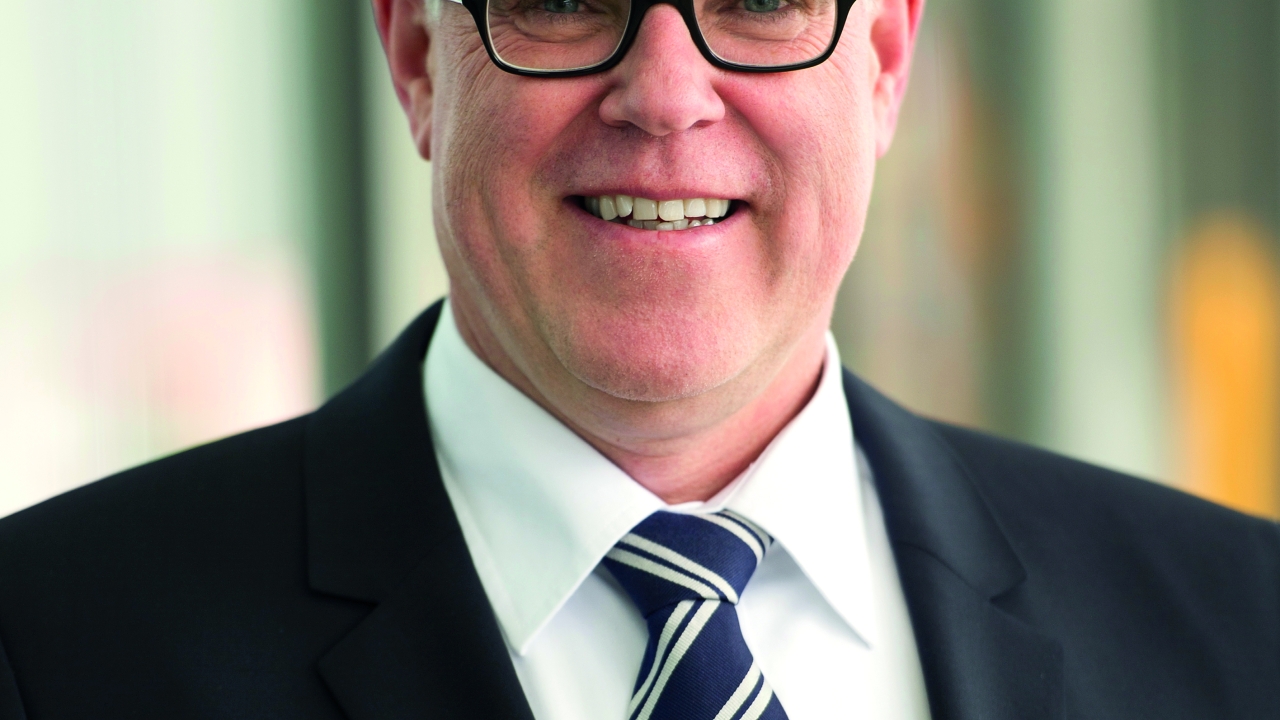Heidelberg’s digital transformation

The company announced a return to profitability in 2014 after five years of losses, and its latest reported results show the company achieved it best quarterly results since 2008 (see boxout).
‘We’ve created a solid basis for the company’s future development,’ says Rainer Hundsdörfer, Heidelberg CEO. ‘We now need to gear our strategy towards becoming a digital company focused on customer needs. This will also bring the expected growth in sales and a further substantial improvement in profitability in the future.’
Hundsdörfer took up the reins as CEO late last year, having held senior positions at a number of industrial technology companies, including Schaeffler, Trumpf and Weinig. He describes the task of helping Heidelberg return to a preeminent position as ‘honorable’, with finalizing its restructuring, ongoing optimization of its processes and a deep level of R&D giving it ‘probably one of the best opportunities to become the leader of the digital transformation.
‘We are turning a machine builder into a digital company. I was involved in digital transformation in the 1980s with computer-integrated manufacturing. Now, digitization is helping us to improve the process of developing, building and selling machines, and to create new business models, which are not possible without digitization. Heidelberg has 80 percent of the pieces needed to achieve this, with the remaining 20 percent required to complete the picture. The incentive for me is to really lead this digital transformation, as we fix and improve the current business, and become more of a digital company than a machinery company.’
Not printing
When Hundsdörfer speaks of digital, he is at pains to note that he is not talking about digital printing, rather transformation into a digital business. Under the motto ‘Heidelberg goes digital!’ the Heidelberg Digital Technology (HDT) and Heidelberg Digital Business & Services (HDB) segments have been established. HDT combines sheet-fed offset, label printing and post-press operations, and is responsible for developing, producing and marketing the appropriate technologies and products for new business models. HDB is where Heidelberg manages its operations relating to services, consumables, remarketed equipment, digital printing technology and options throughout the value-added chain. The objective is to increasingly generate substantial growth potential with a comprehensive portfolio developed for specific customer needs throughout the value-added chain, Heidelberg says, from equipment and consumables all the way through to services. At the same time, enhanced efficiency will lead to additional improvements in profitability at Heidelberg.
Prinect is Heidelberg’s established integrated business intelligence platform, which links together all the departments in a print shop to create an intelligent factory, automating job flows and making operations more transparent, and optimizing offset and digital printing processes. Prinect provides a range of individually combinable software modules for small and large-size companies, for commercial and packaging printers, as well as web-to-print.
Prinect formed a major part of the company’s exposure at interpack 2017, where it had a theme of zero defect packaging, including in preparation, inspection and process control.
Stephan Plenz, member of the management board responsible for Heidelberg Digital Technology, comments, ‘The appearance of packaging at the point-of-sale has a direct influence on the purchasing decision and the brand experience of consumers. Depending on the market segment, poorly produced packages – even just variations in color – can result in loss of image as well as a high liability risk. The Heidelberg promise of “zero defect packaging” therefore fulfills the requirements of brands for flawless packaging from an aesthetic, legal, functional and marketing point of view.’
‘More automated processes, fully controlled processes are very important,’ continues Hundsdörfer. ‘This confirms our overall approach to not just be machine builder, but to become a system suppler.
‘The challenge is still in post-press where there are still many mechanical and manual steps. The next step is to automate and integrate the post-press environment even more, with Heidelberg to play a major role.’
Digital printing is of course an important part of the equation, with Gallus Labelfire and Heidelberg Primefire presses now being introduced to the market. The development of both is on track, says Hundsdörfer, with MPS and colordruck Baiersbronn taking Primefire 106 machines for testing. ‘We are exceeding the expectations of our customers and my prediction is that digital printing will take a bigger portion of our business in the future; not immediately as there is still a lot of work to do in terms of cost and productivity.’
He notes that growth in digital will not be led by low volumes, with these achievable using conventional processes. Rather, Hundsdörfer sees independence from qualified operators as a boon for digital printing. Having qualified operators is becoming more of an issue, he says. ‘It was a driver for CNC, where the issue wasn’t just cost but also independence from the qualification of the machine operator. The delivery of constant and consistent quality will be a driver for digital technology.’
The future
With the Primefire and Labelfire platforms now breaking through, he notes that Heidelberg is open to developments in other areas, such as digital corrugated printing or even wide web flexo for flexible packaging. ‘We have started to make the company customer focused, and are working a lot to understand our customers and their markets. So if the business case is good, we might go for it.’
Consumables will form a larger part of Heidelberg’s business model going forward, ‘everything except paper’, with strategic acquisitions being worked on to bring key knowledge in-house for the manufacturing of consumables.
‘We are putting a lot more effort into developing and improving the application. This requires knowledge on inks, chemicals and other consumables. To build this up internally from scratch would take too long. Therefore, we are pursuing strategic acquisitions.’
Brands are excited by digital, although he sees underdeveloped business models preventing them from utilizing the technology in the near future. Heidelberg is working with brands to show what its technology can do and how it can be implemented, and while the individualization model ‘isn’t there yet’, consistent quality is a driver.
‘There are different reasons for applying digital technology and different motivations. When developing something new, it is essential that we make sure the customers of the customer have a need for it.’
He identifies Omnifire, Heidelberg’s inkjet printing technology for 4D/direct-to-shape printing, as an example. With this technology, Heidelberg is still building a business case and establishing the technology. ‘There has been a lot of interest but not significant sales. We have learnt that the current product is too small, with the next generation of this technology – Omnifire 1000 – to change that.’
Heidelberg exhibited at the IST Metz UV Days 2017 event, with Omnifire technology shown to attendees through printed golf balls, themselves presented in cartons printed using its Cristala Pearl technology.
Stay up to date
Subscribe to the free Label News newsletter and receive the latest content every week. We'll never share your email address.


